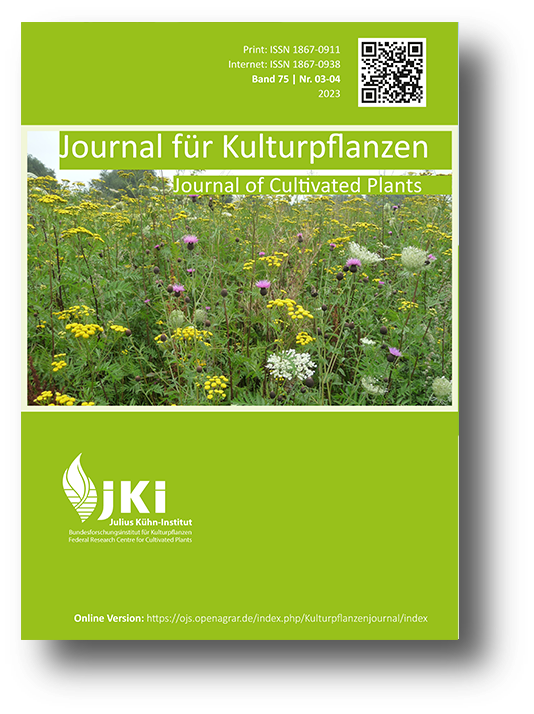Impact of camelina (Camelina sativa (L.) Crantz, Brassicaceae) on the diversity of pollinators (Apidae & Syrphidae) in camelina-pea mixed crop cultivation
DOI:
https://doi.org/10.5073/JfK.2023.03-04.02Keywords:
camelina, mixed crop cultivation, pollinators, diversity, renewable resourcesAbstract
The decline in insects forces the establishment of insect-friendly cultivation systems in agricultural landscapes in order to support pollinating insects and preserve ecosystem services. The study aims to clarify whether the additional cultivation of camelina in pea crops increases the diversity of wild bees and hoverflies. Abundance and diversity were considered and evaluated in camelina-pea mixed crop cultures, pea cultures and camelina cultures in three consecutive years by using standardized methods such as pan traps and visual catches. Aphid infestation, aphid predators as well as butterflies were also recorded. The comparison of pollinators shows an increase in species numbers in all three years of collection as well as in the number of individuals in 2020 and 2021 in mixed crops compared to pea crops. Calculated diversity indices (Shannon-Wiener-Index Hs and Evenness E) averaged Hs = 2.86 with E = 0.72 for mixed crops and thus higher than for pea crops, with Hs = 2.39 and E = 0.65. In camelina crops, also butterflies benefit visibly from the additional offer of flowers. The study demonstrates that additional cultivation of camelina provide necessary flowering resources, that have been shown to be used by a more diverse pollinator community, thereby supporting biodiversity in agricultural landscapes.
Published
Issue
Section
License
Copyright (c) 2023 Stefanie Göttig, Annette Herz, Christian Walter

This work is licensed under a Creative Commons Attribution 4.0 International License.
The content of the journal is licensed under the Creative Commons Attribution 4.0 License. Any user is free to share and adapt (remix, transform, build upon) the content as long as the original publication is attributed (authors, title, year, journal, issue, pages).
The copyright of the published work remains with the authors. The authors grant the Journal of Cultivated Plants, the Julius Kühn-Institut and the OpenAgrar repository the non-exclusive right to distribute and exploit the work.







